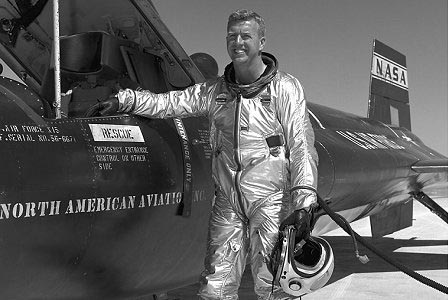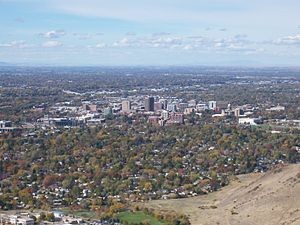James McDonald, Statement on UFOs to U.S. House Committee on Science and Aeronautics, 1968 Symposium on UFOs
This question may come in just that form from persons with essentially no knowledge of UFO history. From others who do know that there have been “a few” pilot-sightings, it comes in some altered form, such as, “Why don’t airline and military pilots see UFOs all the time if they are in our atmosphere?” By way of a partial answer, consider the following cases. (To facilitate internal reference, I shall number sequentially all cases hereafter treated in detail.)
Case 1. Boise, Idaho, July 4, 1947:
Only about a week after the now-famous Mt. Rainier sighting by private pilot Kenneth Arnold, a United Air Lines DC-3 crew sighted two separate formations of wingless discs, shortly after takeoff from Boise.
I located and interviewed the pilot, Capt. Emil J. Smith, now with United’s New York office. He confirmed the reliability of previously published accounts. United Flight 105 had left Boise at 9:04 p.m. About eight minutes out, en route to Seattle, roughly over Emmett, Idaho, Co-pilot Stevens, who spotted the first of two groups of objects, turned on his landing lights under the initial impression the objects were aircraft. But, studying them against the twilight sky, Smith and Stevens soon realized that neither wings nor tails were visible on the five objects ahead. After calling a stewardess, in order to get a third confirming witness, they watched the formation a bit longer, called Ontario, Oregon CAA to try to get ground- confirmation, and then saw the formation spurt ahead and disappear at high speed off to the west.
Smith emphasized to me that there were no cloud phenomena to confuse them here and that they observed these objects long enough to be quite certain that they were no conventional aircraft. They appeared “flat on the bottom, rounded on top“, he told me, and he added that there seemed to be perceptible “roughness” of some sort on top, though he could not refine that description. Almost immediately after they lost sight of the first five, the second formation of four (three in line and a fourth off to the side) moved in ahead of their position, again traveling westward but at a somewhat higher altitude than the DC-3’s 8000 ft.
These passed quickly out of sight to the west at speeds which they felt were far beyond then-known speeds. Smith emphasized that they were never certain of sizes and distances, but that they had the general impression that these disc-like craft were appreciably larger than ordinary aircraft. Smith emphasized that he had not taken seriously the previous week’s news accounts that coined the since-persistent term, “flying saucer.” But, after seeing this total of nine unconventional, high-speed wingless craft on the evening of 7/4/47, he became much more interested in the matter. Nevertheless, in talking with me, he stressed that he would not speculate on their real nature or origin. I have spoken with United Air Lines personnel who have known Smith for years and vouch for his complete reliability.
Discussion:
The 7/4/47 United Air Lines sighting is of historic interest because it was obviously given much more credence than any of the other 85 UFO reports published in press accounts on July 4, 1947 (see Ref. 8). By no means the most impressive UFO sighting by an airliner crew, nevertheless, it is a significant one. It occurred in clear weather, spanned a total time estimated at 10-12 minutes, was a multiple-witness case including two experienced observers familiar with airborne devices, and was made over a 1000-ft altitude range (climb-out) that, taken together with the fact that the nine objects were seen well above the horizon, entirely rules out optical phenomena as a ready explanation.
It is officially listed as an Unidentified.

